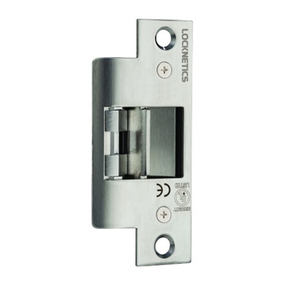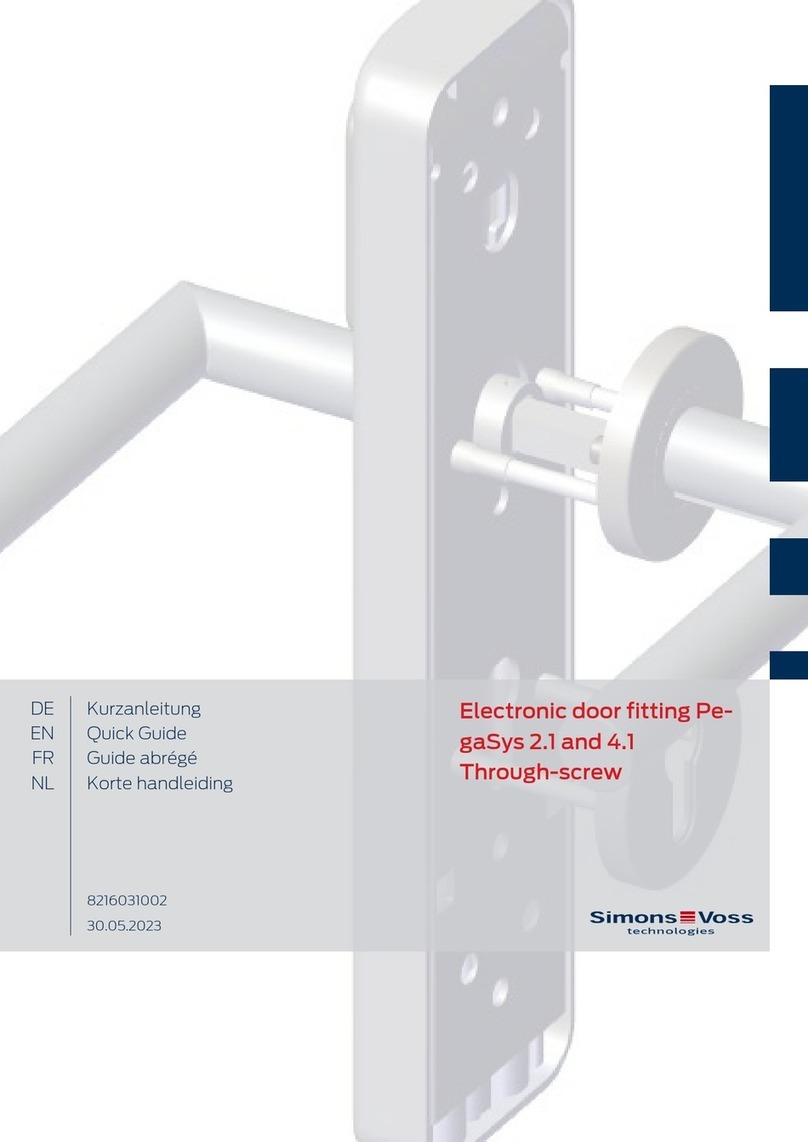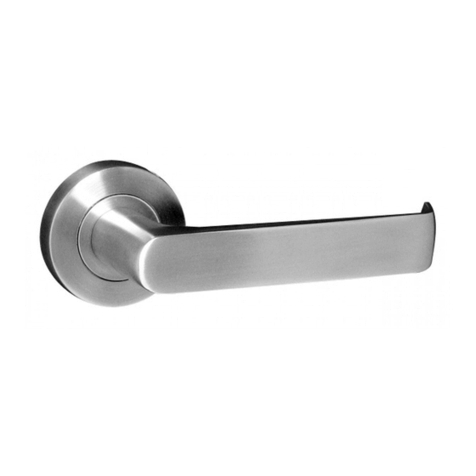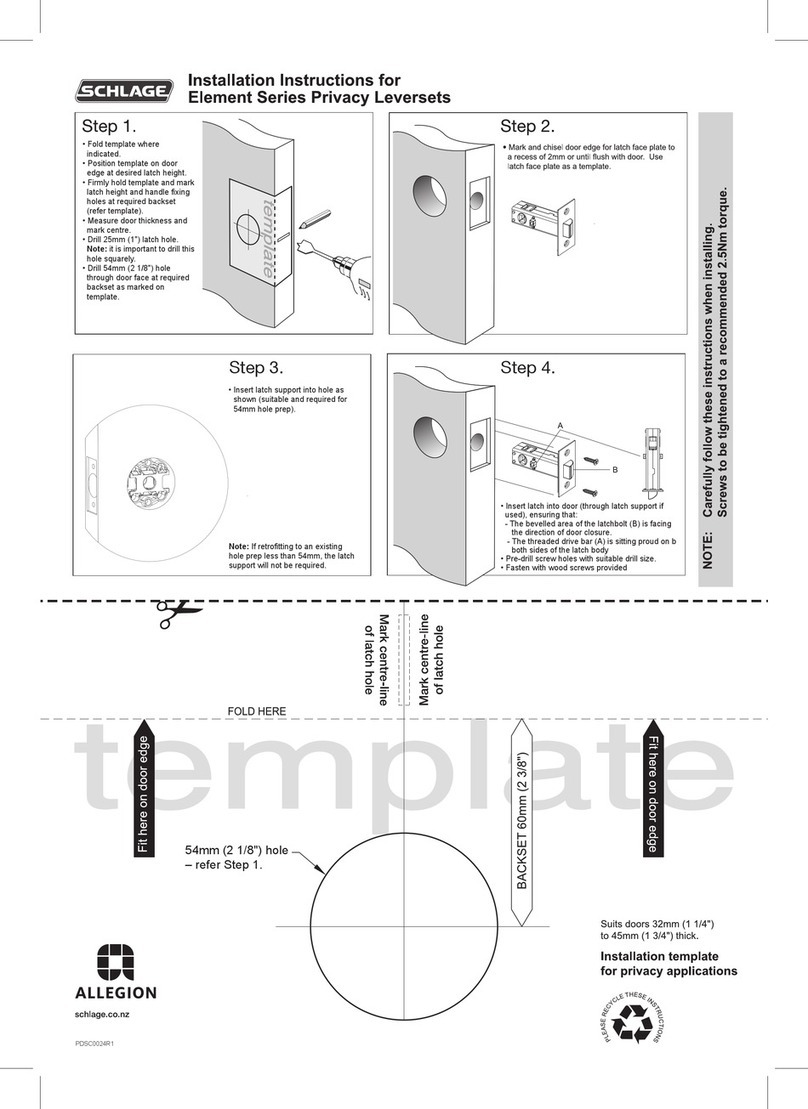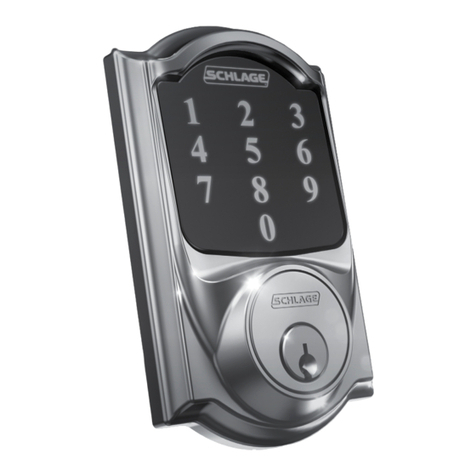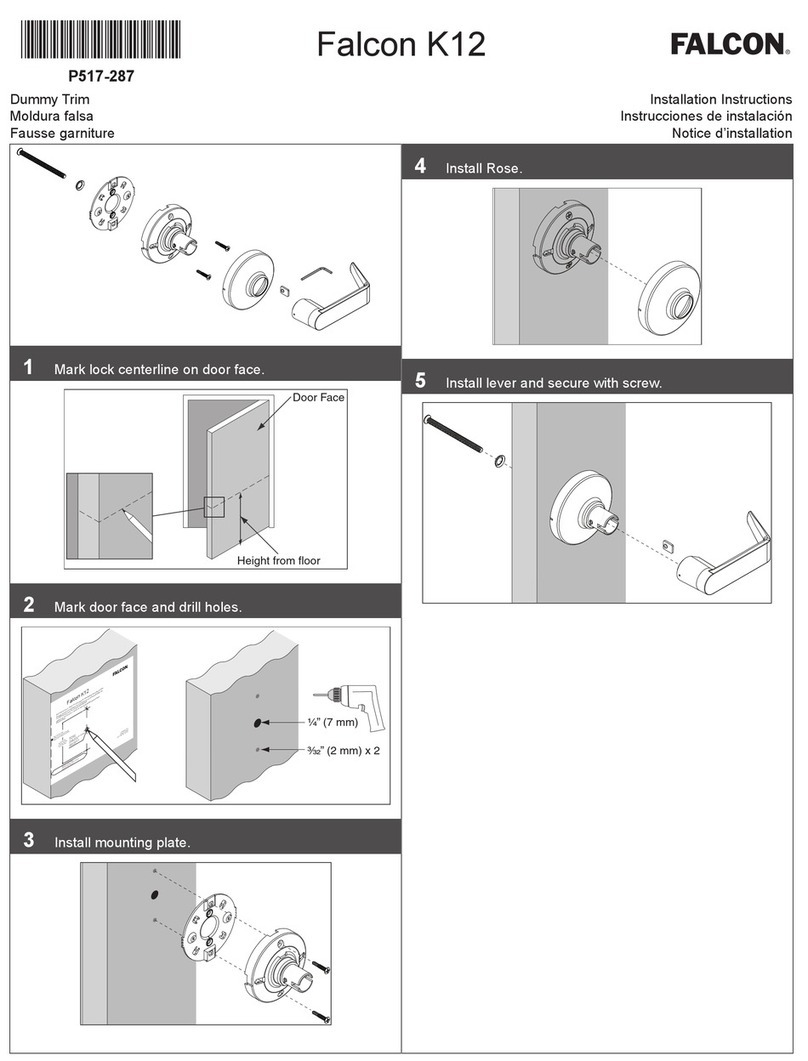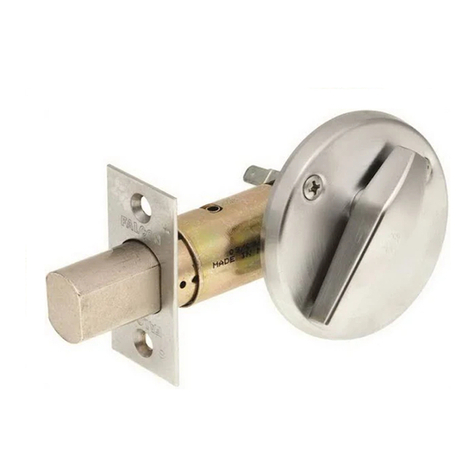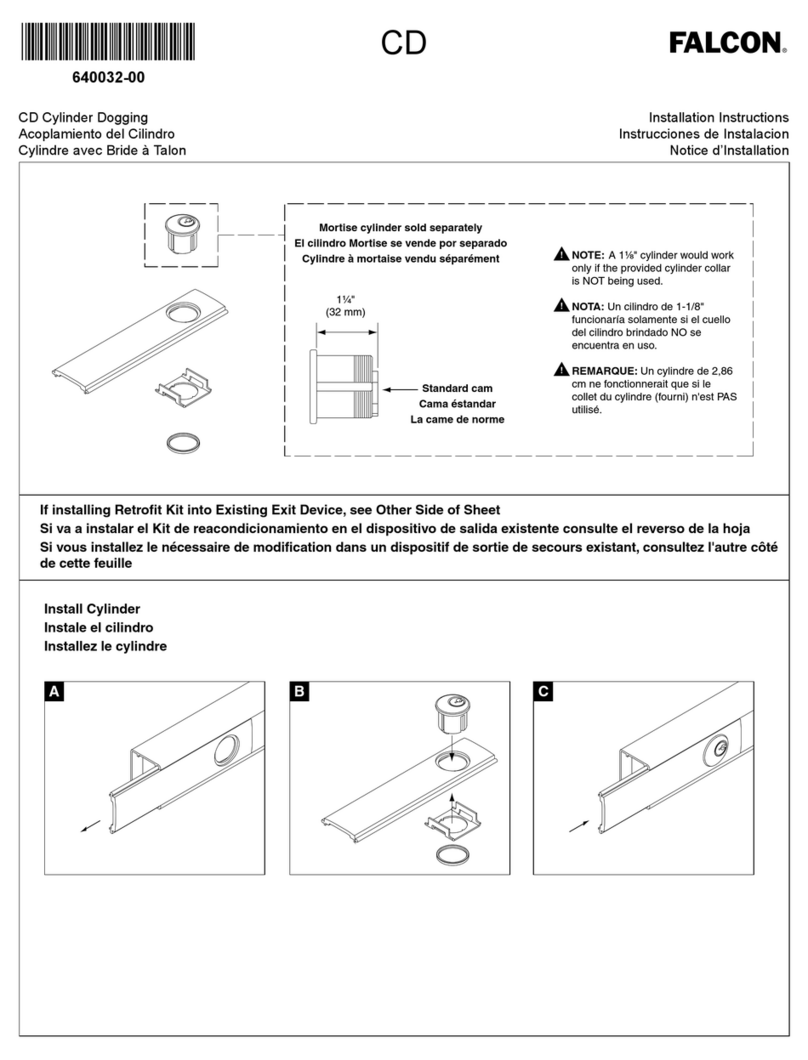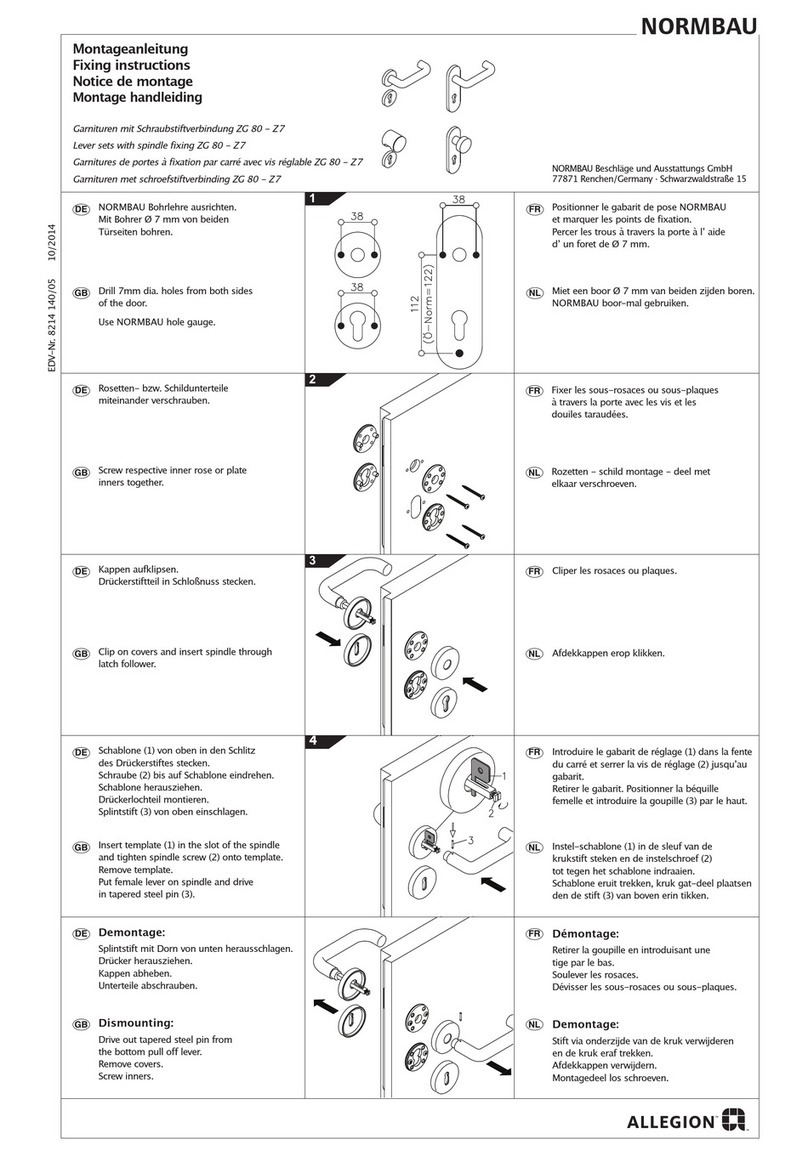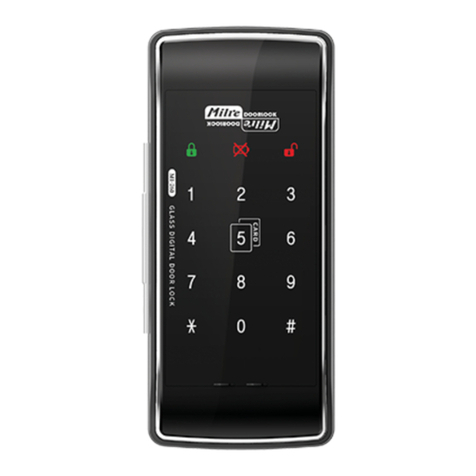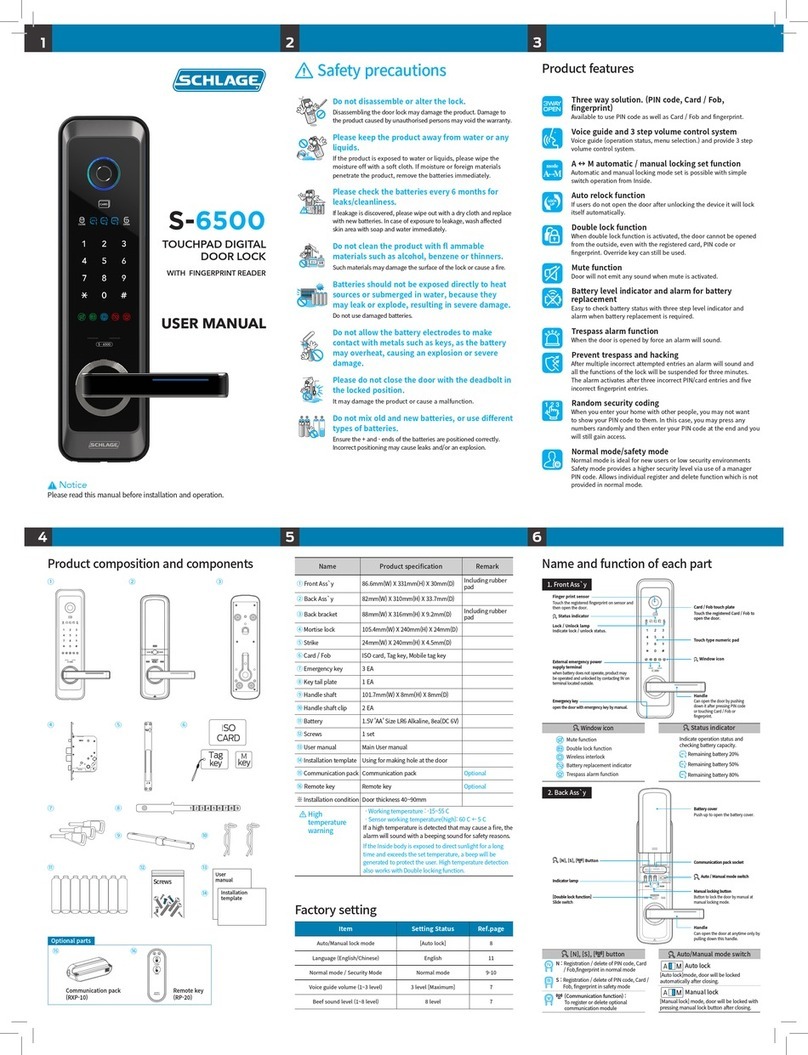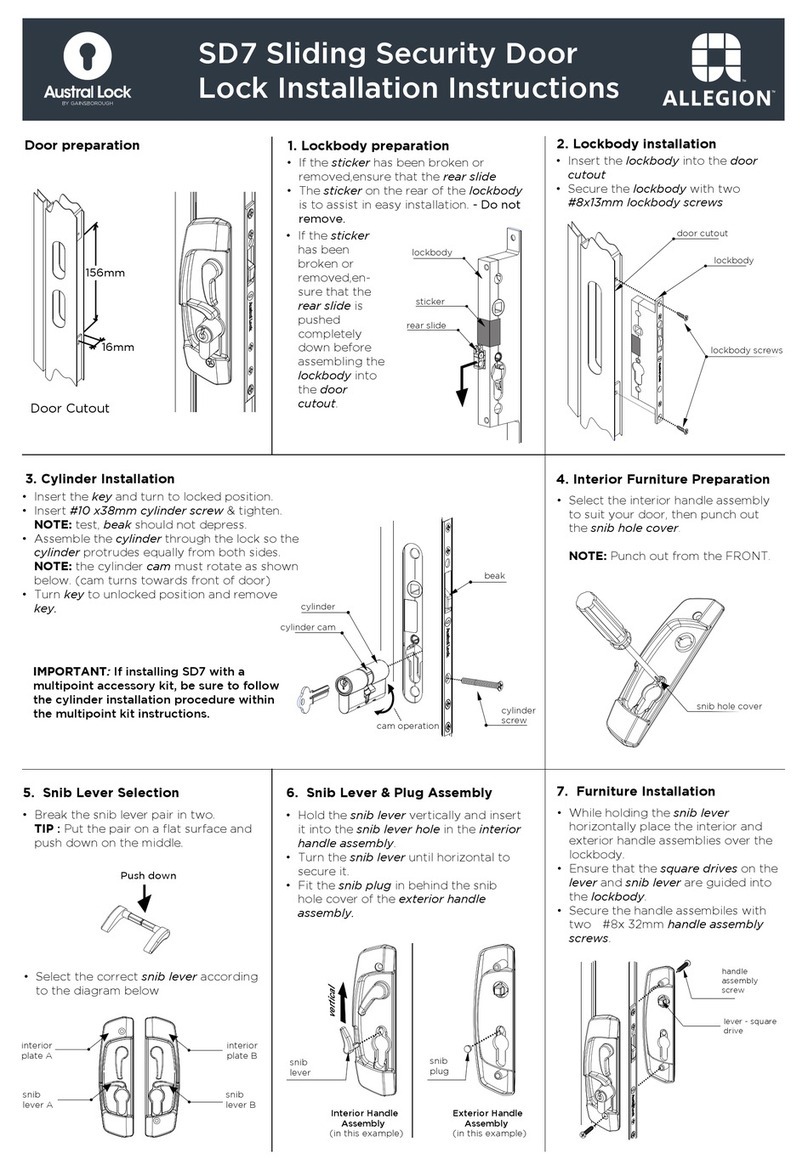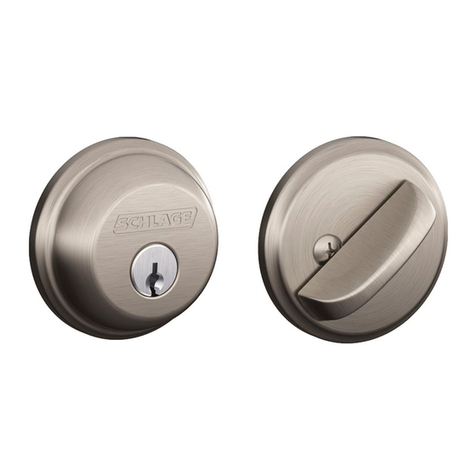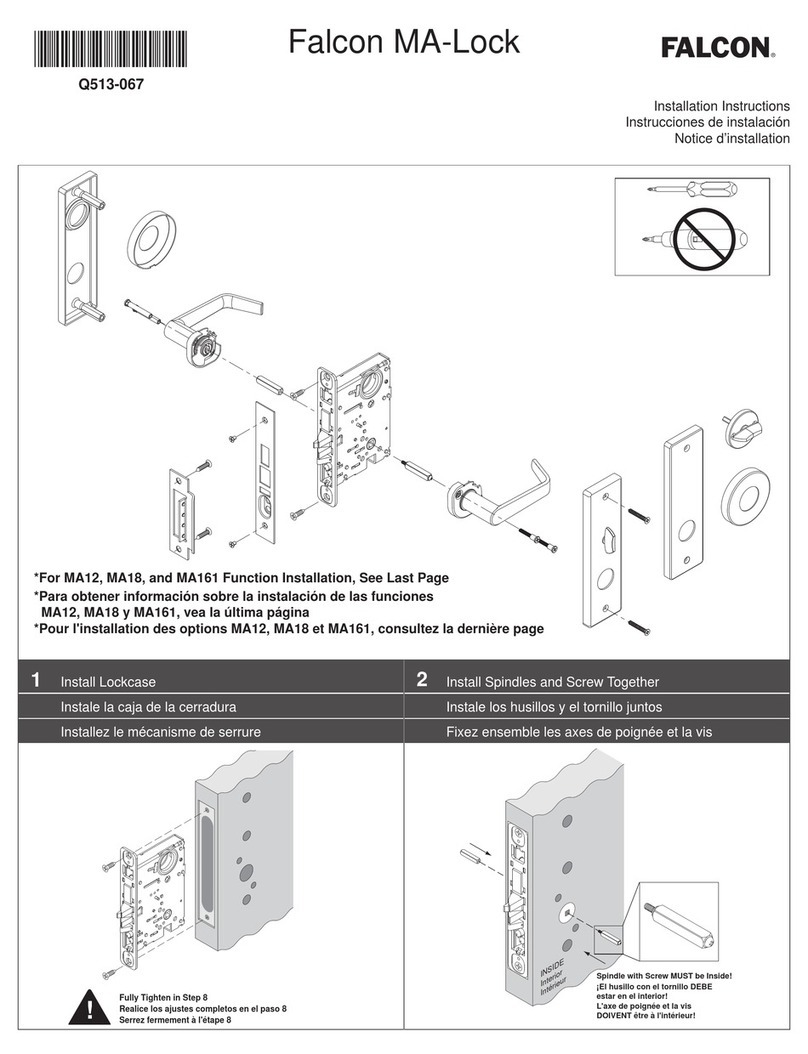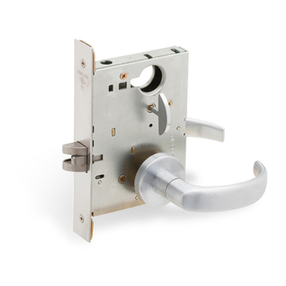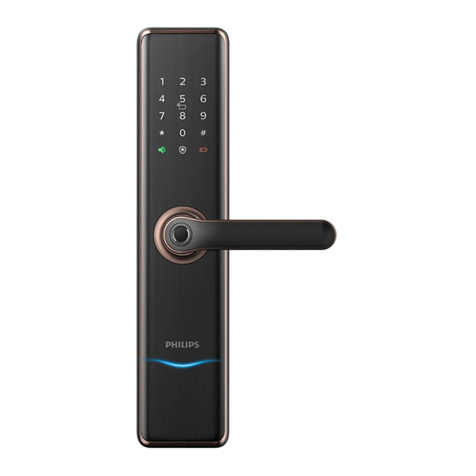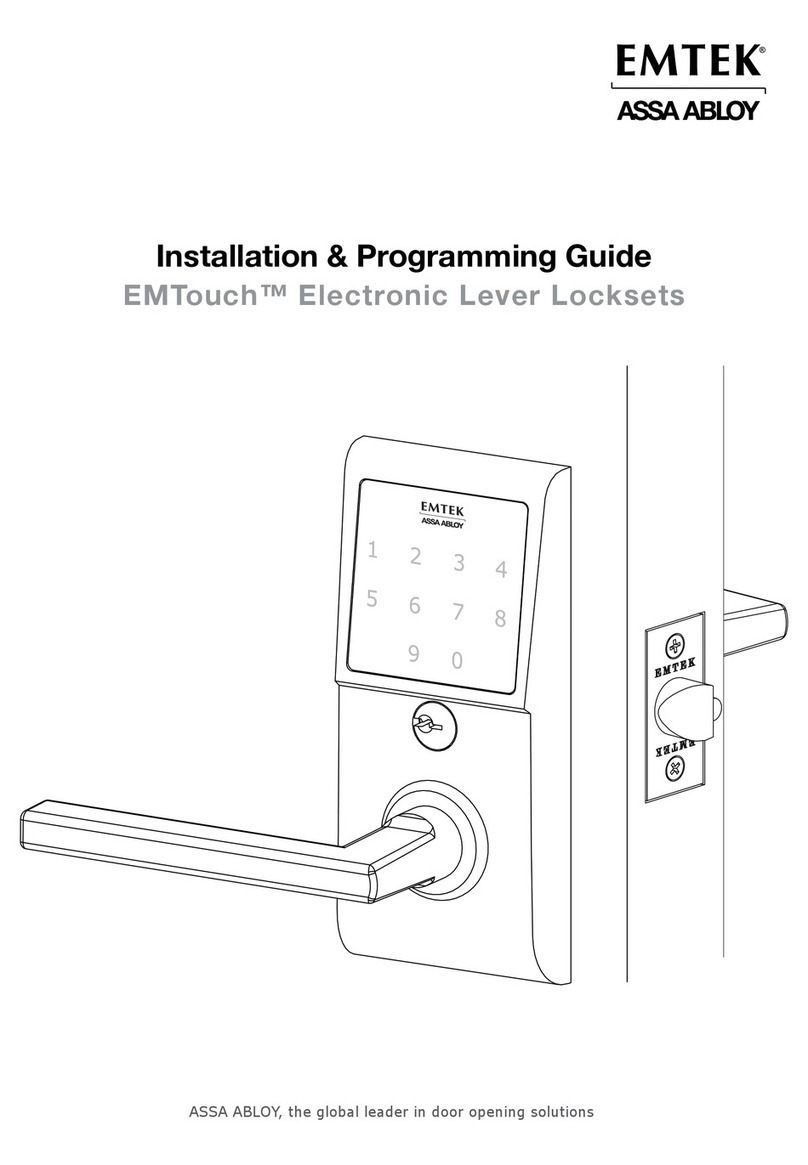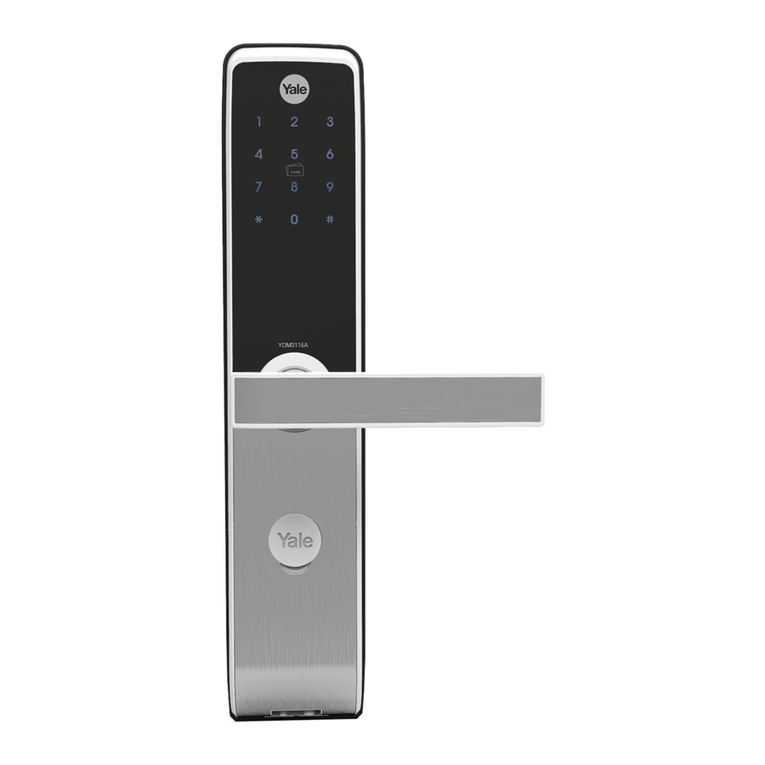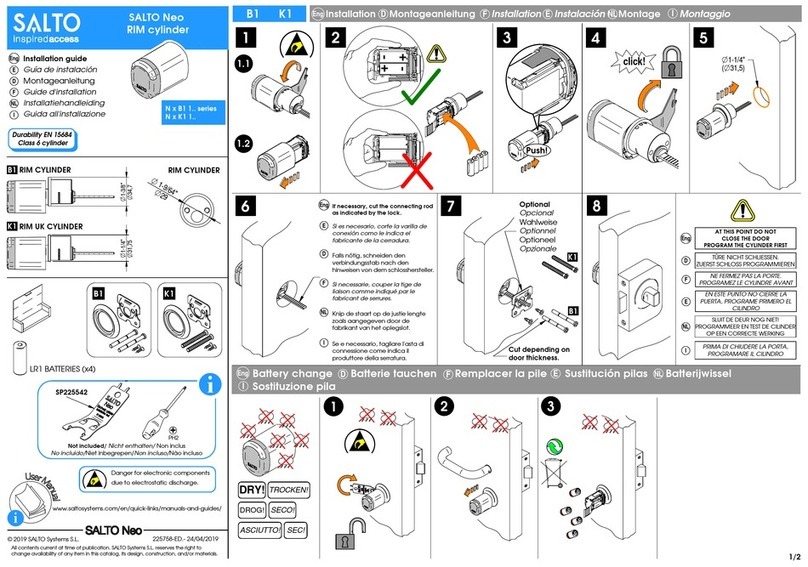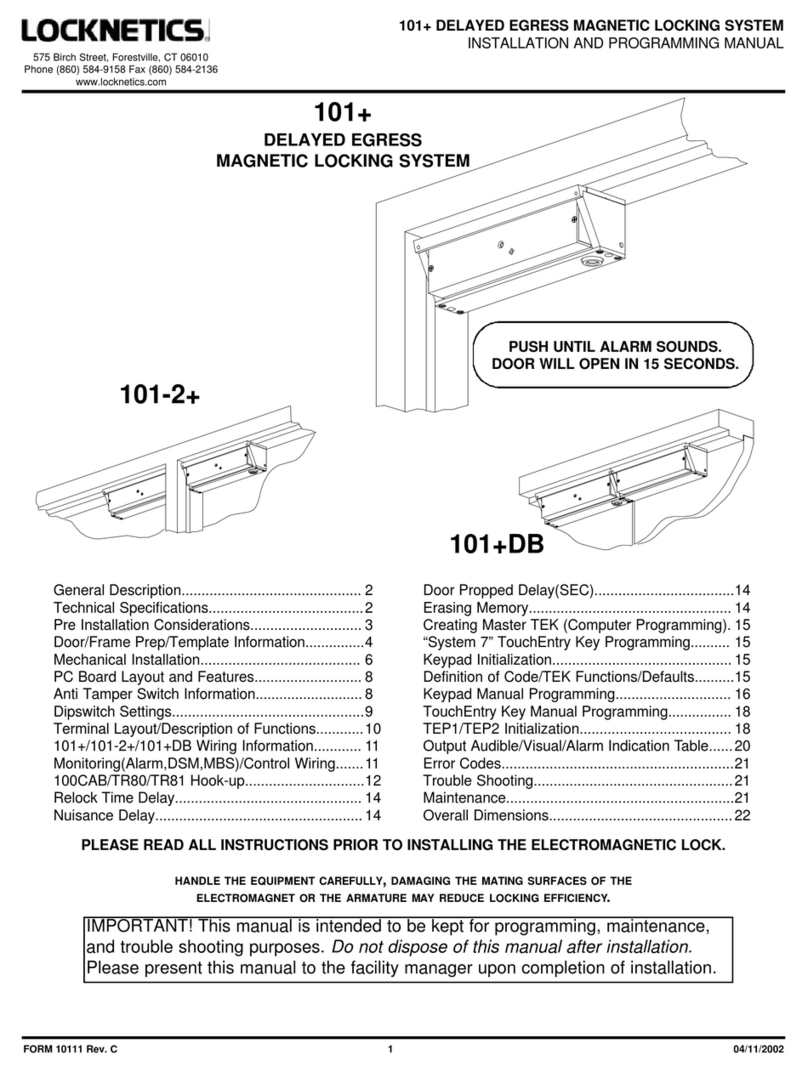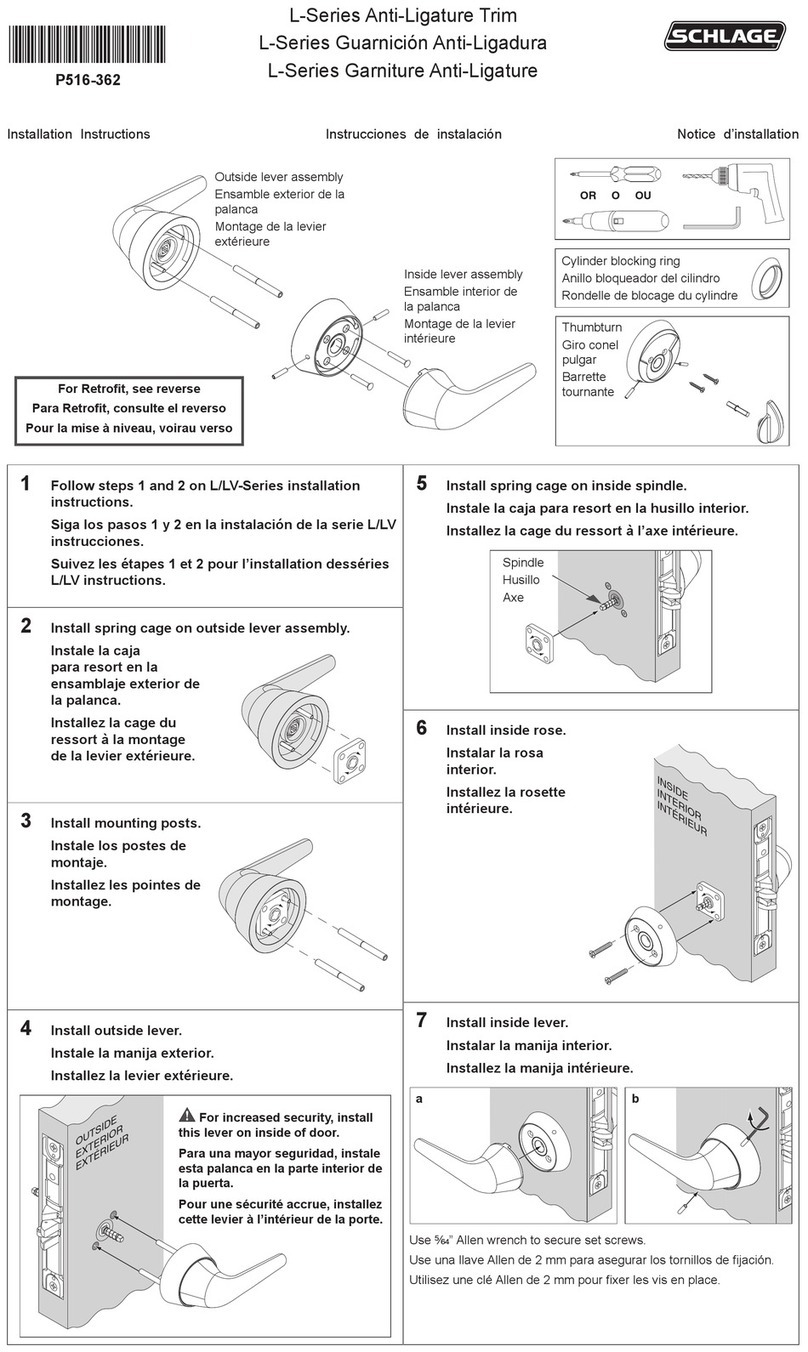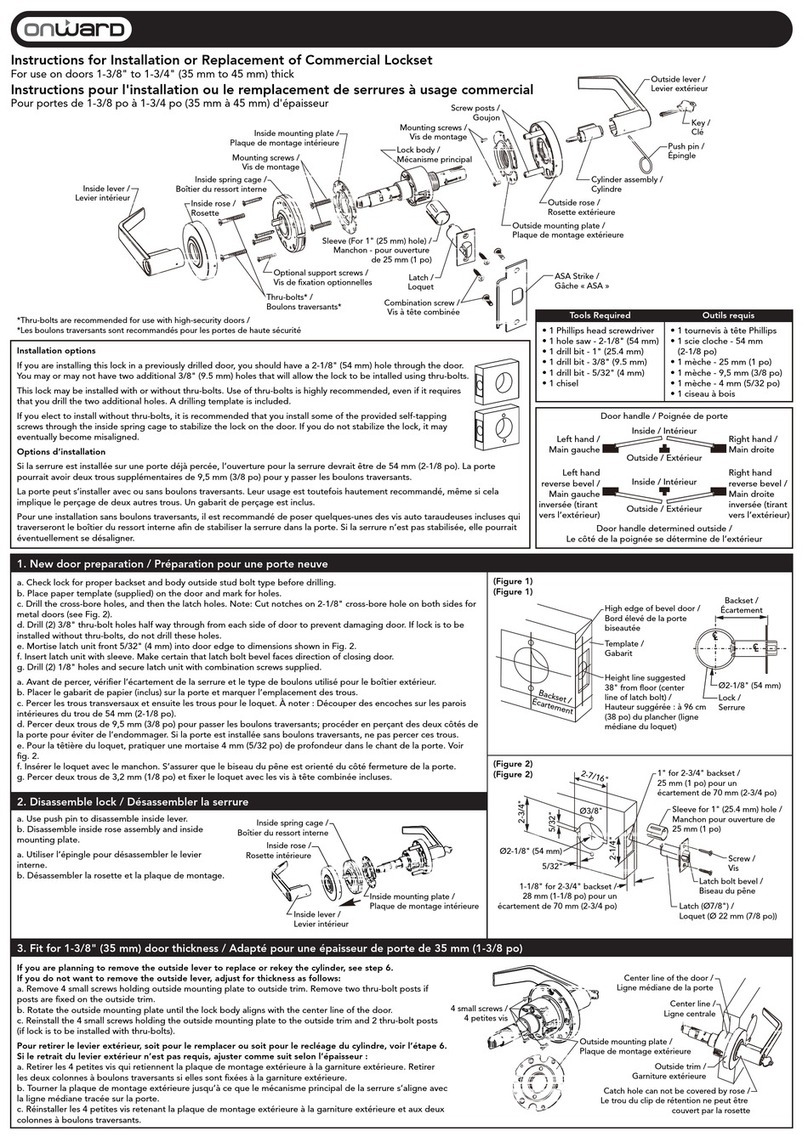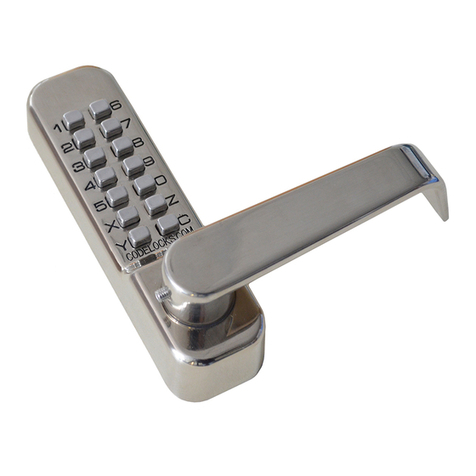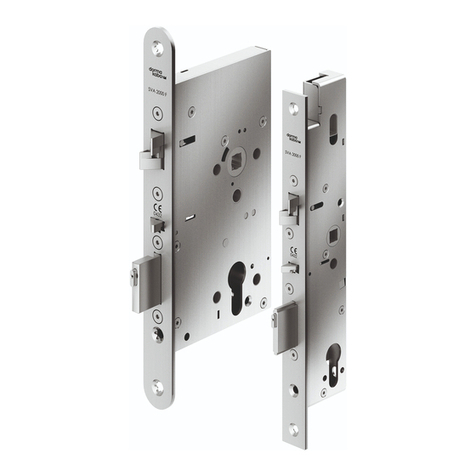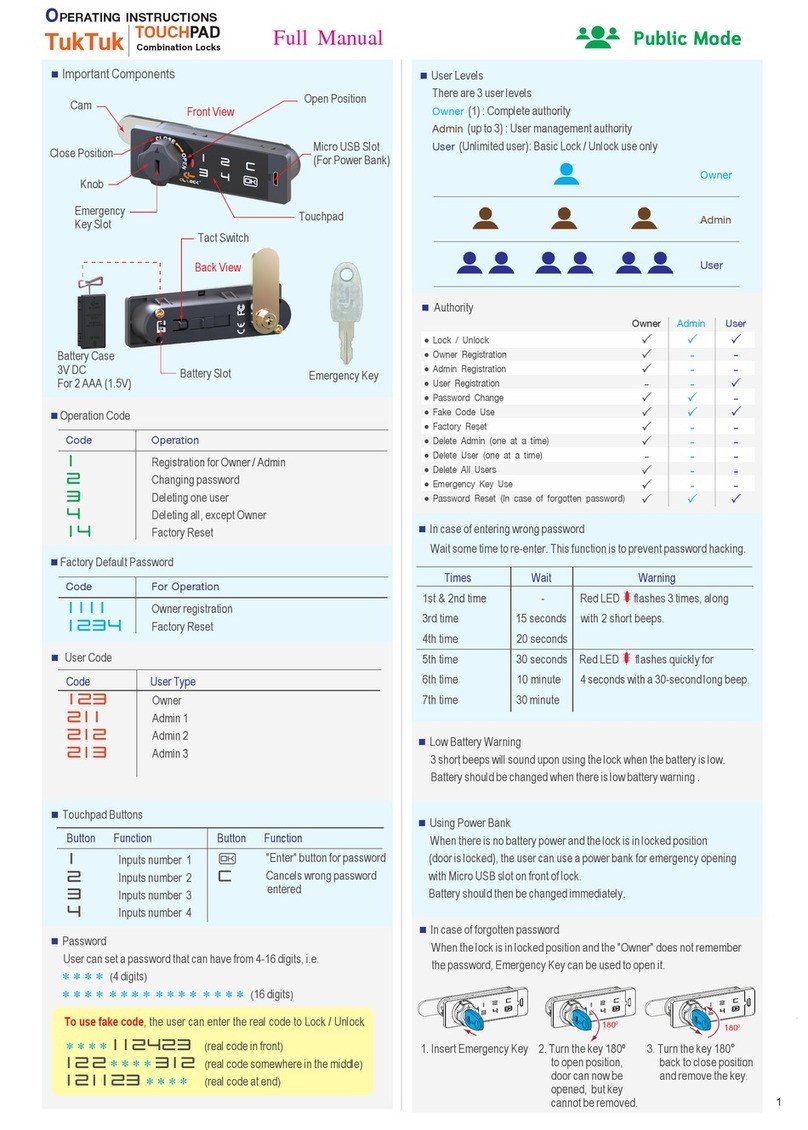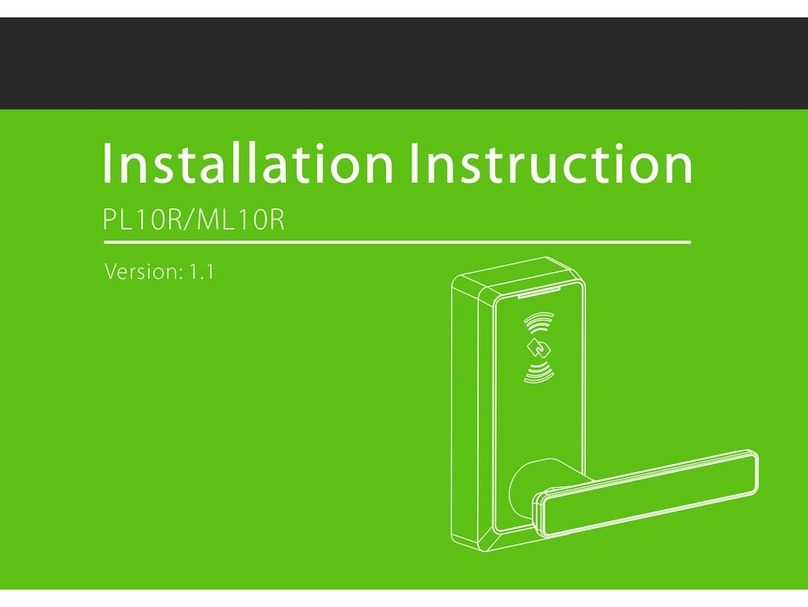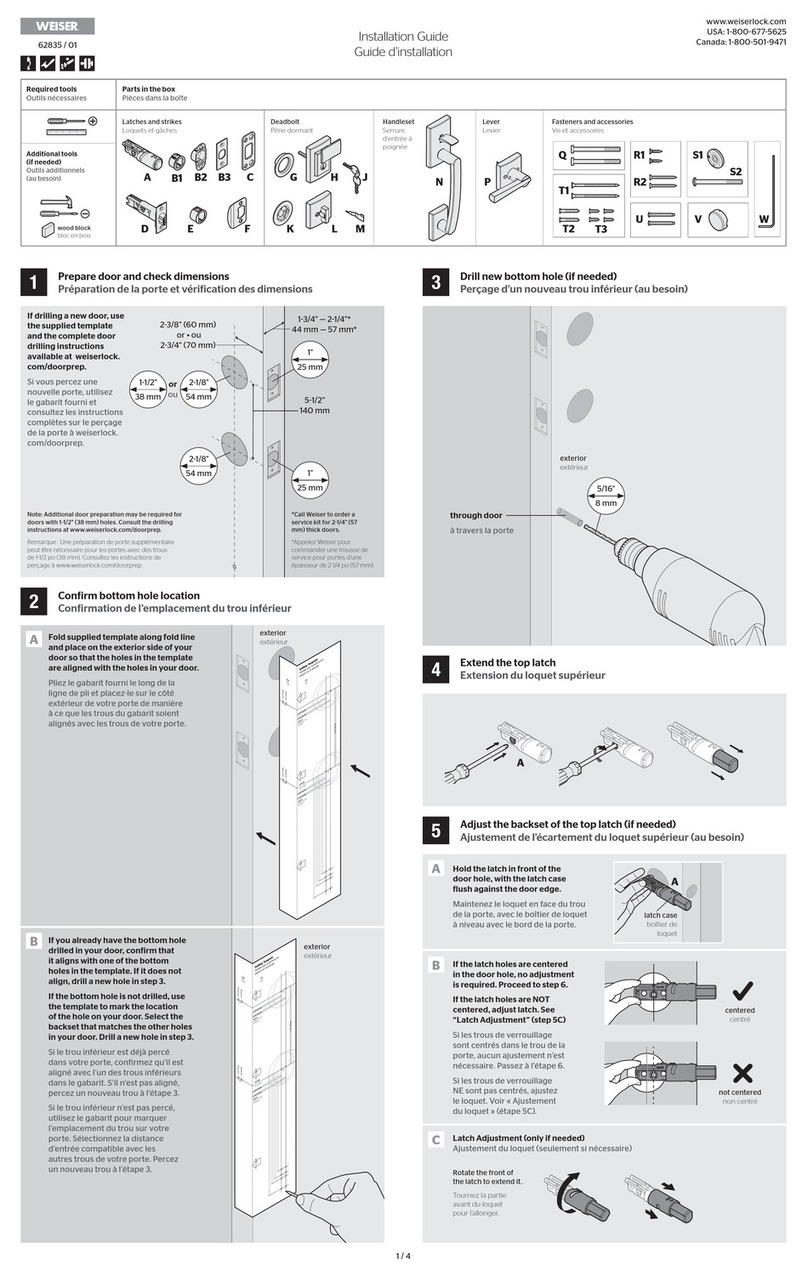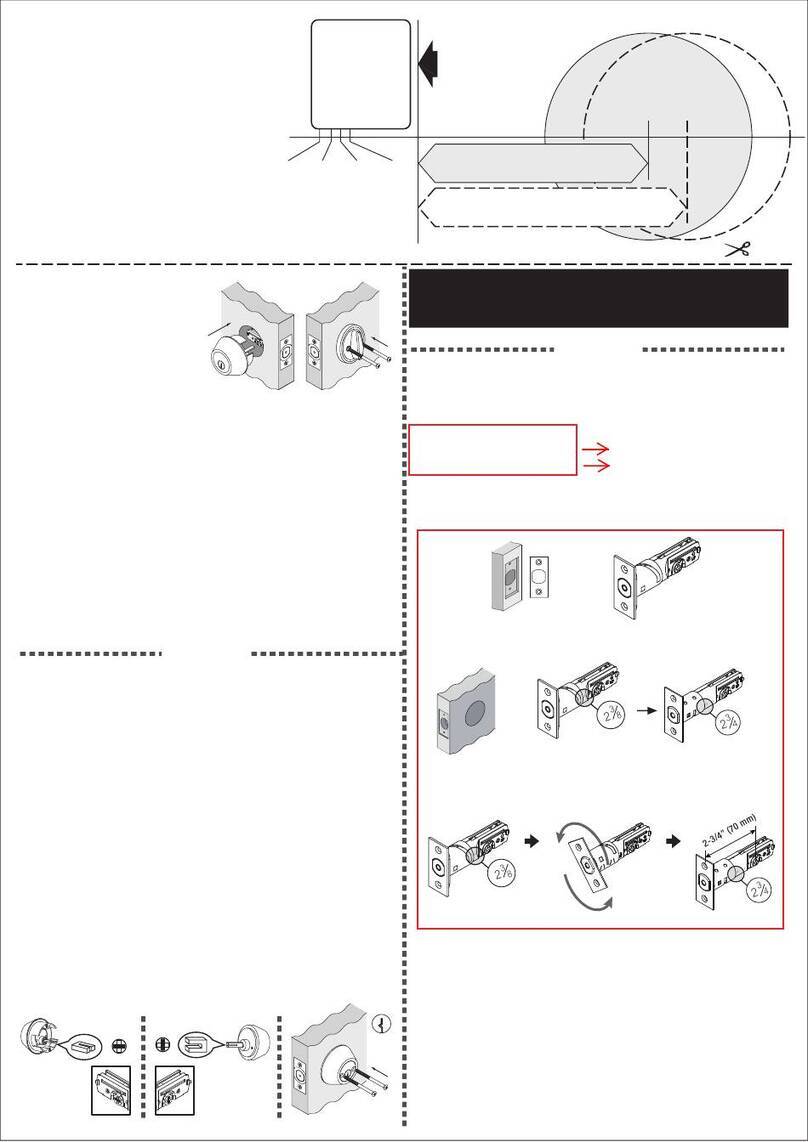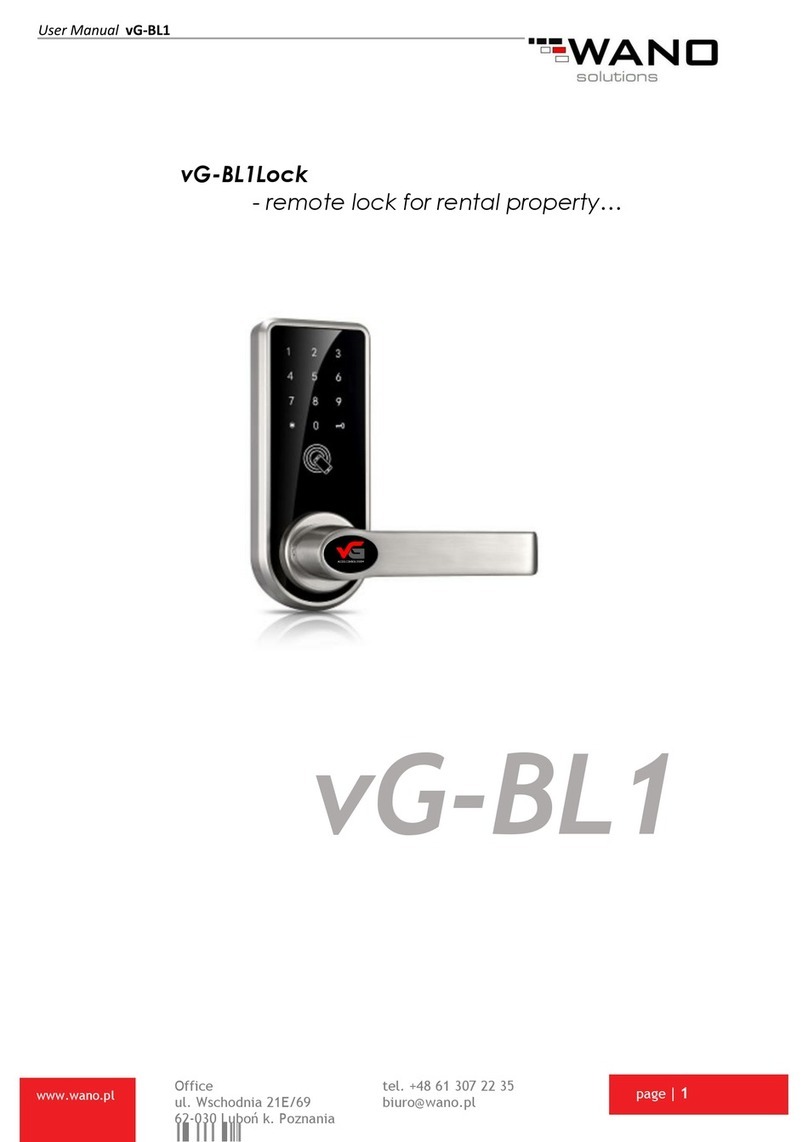
9
ADDITIONAL INSTALLATION REQUIREMENTS
•Before installation ensure door and frame are in good condition, correctly hung and not distorted
Note- Maximum door distortion of 5mm to ensure safe exit.
•It is not recommended that exit devices be fitted to hollow core doors unless specially designed for this
type of door.
•It is recommended to verify that the door construction allows the use of the device, i.e. to verify that
offset hinges and engaging leaves allow both leaves to be opened simultaneously, or to verify that the
gap between door leaves does not differ from that defined by the exit device producer, or to verify that
the opening elements do not interfere, etc.
•Before fitting an emergency exit device to a fire/smoke resisting door, the fire certification of the fire door
assembly on which the exit device has been tested to prove suitability for use on a fire door should be
examined. It is of utmost importance that an exit device is not used on a fire door assembly of a greater
fire resistance time than approved for.
•Care should be taken to ensure that any seals or weather-stripping fitted to the complete door assembly
does not inhibit the correct operation of the emergency exit device.
•On double door sets with rebated meeting stiles and where both leaves are fitted with emergency exit
devices, it is essential to check that either leaf will open when its emergency exit device is activated and
also that both leaves will open freely when both emergency exit devices are operated simultaneously.
•Category 2 (Standard projection) emergency exit devices should be used in situations where there is
restricted width for escape, or where the doors to be fitted with the emergency exit devices are not able
to open beyond 90°
•Different fixing can be necessary for fitting emergency exit devices to wood, metal or frameless glass
doors. For more secure fixing, male and female through-door bolts, reinforcement and rivets can be
used.
•These exit devices are not intended for use on double action (double swing) doors.
•These fixing instructions should be carefully followed during installation. These instructions and any
maintenance instructions should be passed on by the installer to the user.
•When installing lever operating emergency exit devices, particularly on doors with raised or recessed
surfaces, consideration should be given to minimizing any potential safety risks, such as the trapping of
fingers or clothing.
•The bolt heads and keepers should be fitted to provide secure engagement. Care should be taken to
ensure that no projection of the bolt heads, when in the withdrawn position, can prevent the door
swinging freely.
•Where emergency exit devices are to be fitted to double doorsets with rebated meeting stiles and self
closing devices, a door coordinator device in accordance with EN 1158 should be fitted to ensure the
correct closing sequence of the doors. This recommendation is particularly important with regard to
smoke/fire-resisting door assemblies.
•No devices for securing the door in the closed position should be fitted other than specified in EN 1125 /
EN 179. This does not preclude the installation of self-closing devices.
•If a door closing device is to be used to return the door to the closed position, care should be taken not
to impair the use of the doorway by the young, elderly and infirm.
•Where applicable, the “Push to open” sign should be applied on the inside face of the door immediately
above the operating element.













